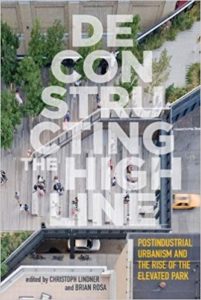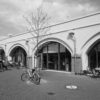 Daan Wesselman in Deconstructing the High Line: Essays on Postindustrial Urbanism (Rutgers University Press, 2017), 185-200.
Daan Wesselman in Deconstructing the High Line: Essays on Postindustrial Urbanism (Rutgers University Press, 2017), 185-200.
This chapter offers a detailed analysis of the stalled Hofbogen project, which has been attempting to build a pedestrian public space on top of a disused railway viaduct in Rotterdam. It focuses on how this proposal assimilates and reconfigures the High Line’s approach to urban renewal, including the aim to create a heterotopian space – that is, a space of radical difference and otherness. The Hofbogen is made different by being a double space: both a strange obstacle that cuts across the city and a lived space that represents everyday life in Rotterdam. An illustrative case for projects aiming for the “High Line effect”, it shows how both the High Line and the Hofbogen call not for some general design formula, but instead require a focus on what makes each space specifically different in its own urban setting.
More details are available on the publisher’s website.
